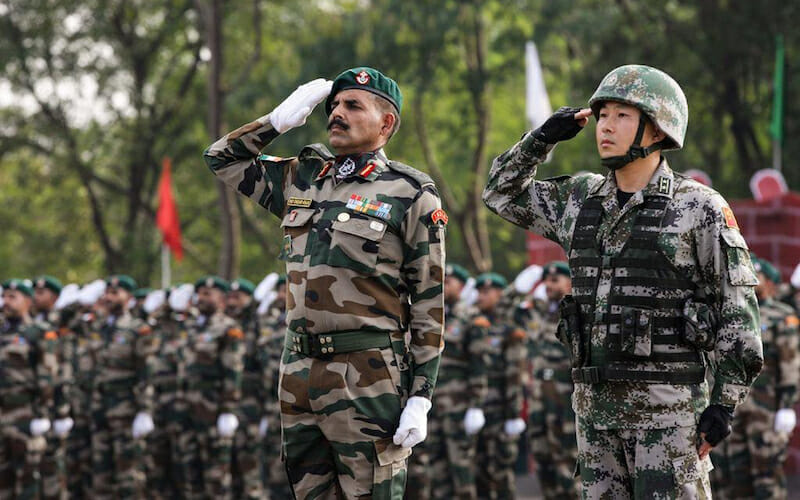
Monsoon Over the Maldives: The Latest Chapter of the India-China Saga
The island nation of the Maldives is experiencing a politically turbulent beginning to 2018 following an uncompromising showdown between the president and the Supreme Court. As the storm brews over the tropical paradise, two of the region’s superpowers, India and China, are attentively keeping tabs on how the proceedings will impact their own cloudy relationship.
In early February, the Supreme Court of the Maldives ruled that the 2015 trial of the opposition leader and former president, Mohammed Nasheed, was unconstitutional, while also ordering for the reinstatement of several opposition politicians. In response, current president, Abdulla Yameen, declared a nationwide state of emergency, instructed the army to resist any attempts to impeach him and called for the arrest of a number of high-profile challengers. Two Supreme Court judges and another former president, Maumoon Abdul Gayoom, were arrested, while the country’s senior police commissioner, Ahmed Areef, who had announced plans to enforce the court’s verdict, was consequently sacked.
Following the events, both Yameen and Nasheed sent urgent pleas to Asia’s major powerhouses for their backing. Yameen sent an envoy including his Economic Development Minister to China and Nasheed who lives in neighboring Sri Lanka used Twitter to openly request a physical Indian military presence and called on the United States to monitor the finances of the regime’s leaders, fearing that the country was succumbing to a Chinese “debt trap.”
Since the independence of the Maldives from British rule in 1966, India was among the first nations to develop economic relations in the archipelago nation, while China formalized a working relationship in 1972.
In modern history, India and China have experienced three border-related military conflicts, before improving their relationship. However, tensions between the two peaked in June 2017 when India sent troops to prevent China from constructing a road in the Doklam area, a territory claimed by China and India’s ally Bhutan. The near-breach of the trilateral treaty caused a state of brinkmanship which lasted over two months, before both nations withdrew their troops. A cautious period of détente has since been in place, with a commitment supposedly agreed to between Prime Minister Narendra Modi and President Xi Jinping to maintain peace in the region at the 9th BRICS summit in September 2017.
India’s influence has been on the wane under the incumbent Maldivian government. In the past, India has used its power to actively support and protect pro-Indian leaders of the nation. In 1988, the Indian army successfully derailed a coup d’état led by Maldivian separatists and assisted by PLOTE, a Tamil secessionist group from Sri Lanka, that opposed the regime of Gayoom.
Even as Gayoom’s thirty years of autocratic presidential reign came to an end in 2008, India continued a healthy relationship with the first democratically-appointed Nasheed, by committing to expand the Maldives’ economy and by offering strategic military support. However, Nasheed’s pro-Indian reign came to a controversial end in early 2012. India was further agitated later that year by the abrupt cancellation of the Maldives’ biggest foreign investment project, a $511 million deal by an India-led consortium to modernize Male’s international airport.
President Yameen’s term has entertained an alternative agenda to that of his predecessors. In 2014, during the first visit to the Maldives by Xi Jinping, he helped China negotiate a number of investment projects and also secured Maldivian support for his Maritime Silk Road.
In a move which sparked rage in New Delhi, Yameen greenlit the airport project to a Chinese company, Beijing Urban Construction Group, before announcing other high-level infrastructural projects including the China-Maldives Friendship Bridge and the Hulhule-Hulhumale link road, which would link the capital and the airport with land transportation. Furthermore, in order to entice Chinese investment, Yameen’s cabinet also passed a free trade agreement with China and a bill granting land ownership to foreign entities that can invest $1 billion. The proceedings marked a continuation of recent collaborations that China had agreed to in Pakistan and Sri Lanka, further fueling India’s fears of strategic economic encroachment within the subcontinent by China.
More worryingly for India, national press reports since the late 1990s have regularly stated China’s intention on building a naval base on Marao Island, located in the Maldives. Though the Chinese and Maldivians have denied any formal agreements regarding a base, the relationship will only grow in the coming years if the honeymoon period continues. Yameen is already actively permitting Chinese warships to dock in the archipelago. The Maldivian island of Kelaa lies less than 500 km from the Indian islands of Lakshadweep as well as from the mainland port of Kanyakumari, too close for comfort to allow a potential adversary to strategically set up shop. The developments mirror recent Chinese acquisitions of ports including Sonadia Island in Bangladesh, Hambantota in Sri Lanka, and Gwadar in Pakistan within the Indian subcontinent.
Reacting to the current crisis and Nasheed’s plea, Prime Minister Modi’s office called for “respect for democratic institutions” and spoke about “playing a constructive role in the Maldives.” Likewise, former National Security Adviser, Shivshankar Menon, also stressed the importance of not taking “any decision in haste.” Indian media outlets have not minced their words, with opinion pieces encouraging strategic action against Chinese influence in “New Delhi’s backyard.” Writing in the Business Standard, former diplomat Amit Dasgupta called for sustained financial sanctions and a travel ban, which would “cripple” the tourism industry and strengthen opposition from rich Maldivians against Yameen.
While the region is not likely to see open hostilities and a military conflict the situation does demonstrate how much China and India distrust one another. Time will tell whether the grownups in the room can hash out a middle ground.

